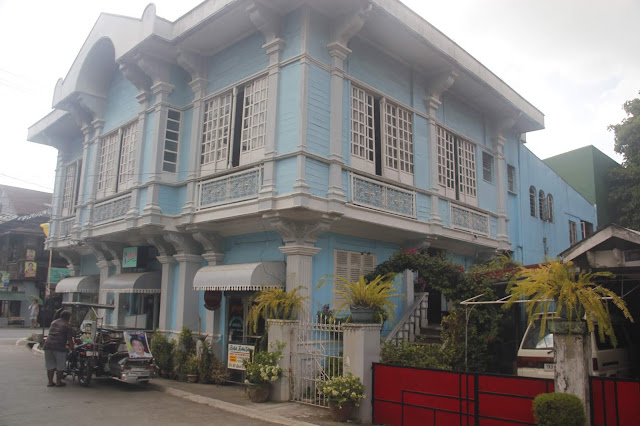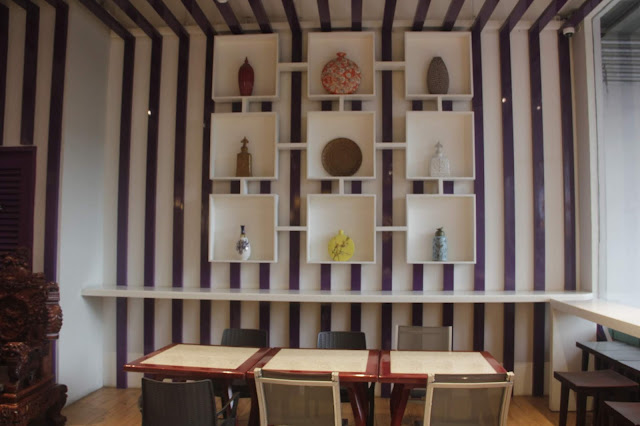First of all, let me greet everyone a Happy New Year! Time flies fast and we are already in 2019. My personal blog turns 10 years this year and this is something to celebrate!
For the past few years, there were not enough blog in my site and as much as I want to update my blog site, several things happen for a reason. Not that I was quite busy it's just that few things that I've been fixing around when it comes to my personal moments.
Today I decided to go to Binondo, Manila and it just happened that it was new year! I should have gone to this place a few days ago but unfortunately due to the rains it prevented me to go to Binondo.
According to Wikipedia, Binondo is a district in Manila and is referred to as Chinatown and is the world's oldest Chinatown. Its influence extends beyond to places of Quiapo, Santa Cruz and San Nicolas.
 |
| BPI Old Building |
The start of my tour was the BPI Old Building. From Hidalgo St. in Quiapo I walked until I reached Isettan. Then across the mall is the Santa Cruz Church and you will see the fountain in the middle of the road, between the church and Binondo ark sign.
 |
Sta Cruz Church
|
 |
| The Fountain serves as the landmark that you already reached the entrance of Ongpin St. |
Then when you see the arch you are entering Ongpin St., the most popular street of Binondo where you can walk from the main entrance until you reached Quintin Paredes road.
 |
| The Arch of Goodwill, which serves as the main entrance of Ongpin St. |
 |
| The main street of Ongpin |
I walked the main street of Ongpin and the first thing I have noticed are the side walk vendors selling some lucky charms.
 |
| The vendor spinning the singing bowl with a stick |
 |
| Singing bowl and inside is a lucky bracelet |
 |
| Lucky Charm |
As I continue to walk along Ongpin St, I entered another arch which was Ongpin North Bridge. This has more profound exploration that you are indeed at Chinatown and it extends to the whole district of Binondo.
 |
| Ongpin North Bridge |
 |
| Mr. Ube Rice and Noodle House |
My first stop after the tiring walk was Mr. Ube Rice and Noodle House, obviously a restaurant with its own kind of food delicacies. At the main entrance is a store where they sell hopia with different flavors and some other delicacies.
 |
| Hopia of all sorts |
 |
| One of the hopia flavors |
Then came to my next stop and is a small altar at the street and you can light an incense and pray for your supplication.
 |
| Little altar in one of the streets in Ongpin |
 |
| Incense |
My next stop would be Eng Bee Tin, A Chinese Deli chain founded in 1912 at Binondo. They built a new building and it only operated six months ago
 |
| Eng Bee Tin one of their branch |
 |
| New Building at the corner |
 |
| First Floor |
 |
| Second Floor where the restaurant is located |
 |
| Second Floor where they sell souvenir items |
 |
| The Great Budhha located at the second floor |
 |
| The Staff of the Great Budhha |
 |
| At the Entrance |
The Great Buddha, which is the fine dining restaurant is just located at the second floor where you can find some souvenir items and a restaurant.
As I continued to walk, finally I reached at the end of Ongpin St. Quinton Paredes road is just right on the end where you can explore more of Chinatown.
Finally, I was able to see the San Lorenzo Ruiz Church in Binondo which is also located at Ongpin St and Quintin Paredes.
 |
| Calesa is still traditional in Manila up to this day |
 |
| San Lorenzo Ruiz Church |
 |
| Candles and Prayers |
 |
| Inside the church of San Lorenzo |
After the tiring walk to Ongpin St. I went back and rested my feet, sitting at the fountain. Then I met some of the visitors too where they had selfies and then I asked to take them pictures.
 |
| Joshua and Joan |
That was the end of my first part of exploring Binondo, Manila. Chinatown is big and in my part two are some of the places that are interesting to go. I missed out visiting the temple but surely on my next visit.























































































